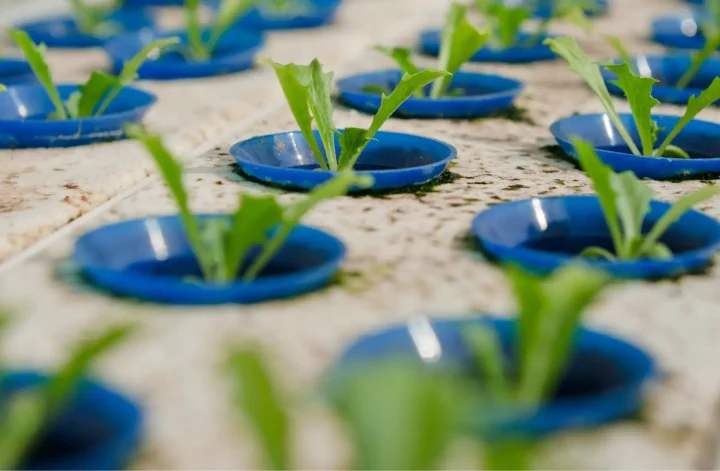Hydroponic gardening relies on the precise delivery of water and nutrients to plant roots, and hydroponic irrigation systems are the heart of this operation. These systems ensure that plants receive the essential elements they need for growth while conserving water and minimizing waste. In this 800-word blog post, we’ll explore the world of hydroponic irrigation systems, examining their importance, types, components, and how they contribute to the success of soilless gardens. For more information regarding hydroponic plant one can visit our site https://hydroponicglobal.com.au/.
Understanding Hydroponic Irrigation Systems:
Hydroponic irrigation systems are designed to deliver a controlled mixture of water and nutrients directly to plant roots. Unlike traditional soil-based gardening, where plants obtain nutrients from the surrounding soil, hydroponic systems rely on precise irrigation to ensure that plants receive optimal nourishment. These systems are essential for maintaining the health and growth of crops in soilless environments.
Functions of Hydroponic Irrigation Systems:
1. Nutrient Delivery: The primary function of hydroponic irrigation systems is to deliver nutrient-rich water directly to plant roots. This ensures that plants have access to the essential elements they need for growth, such as nitrogen, phosphorus, and potassium.
2. Water Conservation: Hydroponic systems are known for their water efficiency. These systems recirculate water, minimizing water waste compared to traditional soil gardening.
3. pH and EC Control: Some advanced hydroponic irrigation systems include sensors and controllers to monitor and adjust the pH and electrical conductivity (EC) of the nutrient solution, maintaining optimal conditions for plant nutrient uptake.
Types of Hydroponic Irrigation Systems:
There are several types of hydroponic irrigation systems, each offering unique advantages and suited to different growing environments:
1. Drip Systems: Drip systems deliver a controlled amount of nutrient solution directly to the base of each plant through drip lines or tubing. These systems are highly efficient and allow for precise control of water and nutrient delivery.
2. Flood-and-Drain (Ebb and Flow) Systems: Flood-and-drain systems flood the grow medium and plant roots periodically before draining the excess solution. This cyclic approach provides oxygen to the roots and is suitable for larger plants.
3. Nutrient Film Technique (NFT) Systems: NFT systems involve a thin film of nutrient solution flowing along the bottom of sloped channels. Plant roots are suspended in the film, allowing for constant nutrient exposure and efficient water use.
4. Deep Water Culture (DWC) Systems: DWC systems submerge plant roots in a nutrient solution. Air stones or diffusers provide oxygen to the roots. These systems are known for rapid growth rates but require precise monitoring of oxygen levels.
5. Aeroponics Systems: Aeroponics systems mist the plant roots with a nutrient solution. These systems maximize oxygen exposure to roots and are highly efficient, but they require careful maintenance.
Components of Hydroponic Irrigation Systems:
Hydroponic irrigation systems typically consist of the following components:
1. Pumps: Water pumps are responsible for moving the nutrient solution through the system, ensuring it reaches all plants evenly.
2. Reservoir: The reservoir holds the nutrient solution and often includes a mix tank for preparing the nutrient solution.
3. Distribution System: This includes tubing, pipes, or channels that transport the nutrient solution from the reservoir to the plants.
4. Emitters: Emitters, such as drip stakes or misting nozzles, deliver the nutrient solution to plant roots.
5. Controllers: Advanced systems may include controllers that monitor and adjust the nutrient solution’s pH, EC, and temperature.
6. Timers: Timers control the frequency and duration of nutrient solution delivery to plants.
Choosing the Right Hydroponic Irrigation System:
Selecting the appropriate hydroponic irrigation system depends on various factors, including the type of plants you’re growing, the available space, and your budget. Consider the following when choosing a system:
1. Plant Type: Different plants have varying nutrient and water requirements. Ensure the system you choose aligns with the needs of your crops.
2. Space: Consider the size of your grow area and the layout of your hydroponic setup. Some systems are more space-efficient than others.
3. Budget: The cost of hydroponic irrigation systems varies. Determine your budget and choose a system that meets your financial constraints.
4. Experience: Some systems require more technical expertise to set up and maintain. If you’re a beginner, opt for a user-friendly system.
Installation and Maintenance:
Proper installation and maintenance are crucial for the effective operation of hydroponic irrigation systems:
1. Assembly: Follow manufacturer instructions for assembling and installing your chosen system.
2. Cleaning: Regularly clean and sanitize components to prevent clogs and the growth of algae or pathogens.
3. Nutrient Solution: Maintain the nutrient solution’s pH and EC levels within the desired range. Monitor and adjust as needed.
4. Regular Inspections: Routinely inspect the system for leaks, blockages, or malfunctioning components. Address any issues promptly.
Benefits of Hydroponic Irrigation Systems:
Hydroponic irrigation systems offer several benefits for soilless gardening:
1. Optimal Nutrient Delivery: These systems provide precise control over nutrient delivery, resulting in healthier, faster-growing plants.
2. Water Efficiency: Hydroponic systems use water more efficiently than traditional soil gardening, reducing water waste.
3. Space Efficiency: Many hydroponic systems are compact and can be adapted to various space constraints.
4. Increased Yield: With optimal nutrient and water delivery, hydroponic systems often yield higher crop production in less time.
In Conclusion:
Hydroponic irrigation systems are the lifeblood of soilless gardening, ensuring that plants receive the precise nourishment they need for growth and productivity. Whether you’re a novice hydroponic enthusiast or an experienced grower, understanding the importance of hydroponic irrigation systems and how to select, install, and maintain them is crucial for achieving thriving, high-yield crops in your hydroponic setup. These systems exemplify the efficiency and precision that define modern soilless cultivation.




